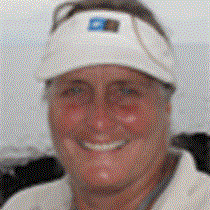Española Island
For those early risers who chose the pre-breakfast kayak outing, their morning began at 0645; the rest of us slept in until 0800. The kayakers never regretted the early start, however, as the sea lions were already fishing, the sea birds were calling and flying, and the ocean was calm at this hour.
After breakfast, two Zodiacs of snorkelers motored over to Gardner Islet where we swam with the playful and graceful sea lions and among schools of colorful fish. Crystal clear water and continuingly calm seas made this a particularly pleasant snorkeling experience.
Next we headed for the beach – and oh, what a beach! The mile long, fine white sand beach at Gardner Bay on Española Island is one of the most beautiful and unspoiled beaches in the world. We were thrilled to spend a couple of hours here among the sea lions. We enjoyed watching them roll and slide through the surf, and on the sand they rested, nursed and scratched. They took over the sand castle our group of kids made, and a “cheeky” young male chased us when we took one step too close.
I had to coax the guests off this fabulous beach when it was time to return to the ship for lunch and to move on to our final visitor’s site on the western point of Española.
Punta Suarez was our last nature walk of this week’s incredible voyage. And no one was disappointed! Some of our group even suggested that we had “saved the best for last.” The trail was rocky and nearly two miles long, and as we slowly made our way across the lava boulders, we hiked past sea lions and reddish marine iguanas, wandered through Nazca and blue-footed booby colonies, watched the salt spray shooting high from a coastal blow-hole, and reached the nesting area of the waved albatross. These endemic birds are pelagic (remain at sea) during the non-breeding season, but between late March and December they come to land on Española to raise a chick.
Albatross are magnificent birds; the Galápagos species is a mid-size albatross, with a wing span of 6-7 feet. They are completely safe on their breeding grounds here in the National Park of Galápagos, but they feed off the coast of Peru and Chile and there they are often killed by fishermen or in nets and on hooks. Because there are only 30,000-35,000 waved albatross in the world, they are a fragile species and we are working towards better protection for them while they are away from the islands.
This has thus far been a good year for albatross breeding success; we counted chicks along the trail this afternoon. They are funny, fat fluffy balls of feathers and when the parent birds return from a few days of fishing they regurgitate concentrated fish oil for the chicks that swells them to nearly popping. Today we watched the adult albatross soar along the cliffs of Española, and found several birds right on our trail.
As we returned towards the ship, carefully stepping from boulder to boulder, I am certain that each of us felt some sadness as we contemplated the end of this fabulous experience. However, we all realize what a pleasure and a privilege it has been to share this week with the fearless and unique wildlife of Galápagos.




